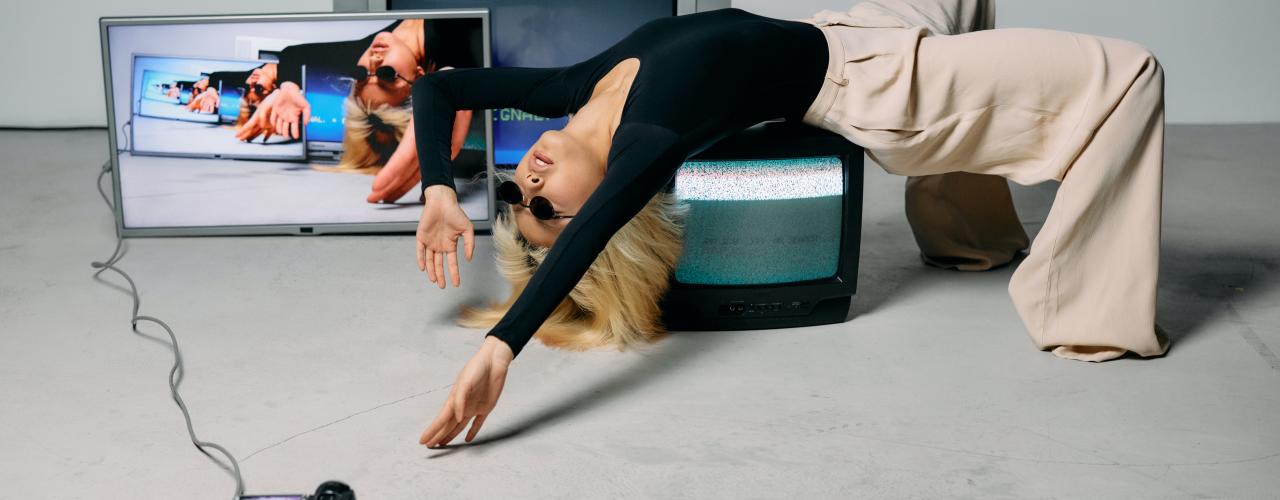VR FASHION

VR Fashion: Madness or Genius?

Gucci, Burberry, Balenciaga, and many more are turning their brands towards a different world. An intangible one, and yet it seems to be working as NFT (non-fungible token) sales are blossoming in an industry built on objects. Most recently, Selfridges has announced its plans to sell NFTs in its Oxford Street Flagship store. It has therefore become the first physical retail space to sell over-the-counter NFTs with customers paying by using their bank cards rather than crypto wallets and other such digital currencies. However, it’s still the digital space dominating the NFT landscape.

In 2021, 777 Karl Lagerfeld pieces priced at 777 euros each, were released by The Dematerialised - a company dedicated to the future of digital fashion. The collection sold out in 33.77 seconds and whilst the time frame might seem staggering for the return of a product that’s essentially made of pixels and data, their breakdown of NFTs is rather compelling.
- See what your digital garment looks like on you! Get a picture of yourself fitted in your piece or try it on in real time via AR!
- Experience your digital garment into your own space! Only for iPhone users right now, download the AR file and interact with your asset in your own environment.
- Get dressed in game! Not many gaming skins are interoperable yet, but you can port selected assets of ours into Sansar, VR CHAT and Decentraland.
- Give your garment a second life! We want your digital fashion assets to live on through consumers to consumer (C2C) resale, not languish in a digital landfill. This circular life cycle is crucial to our mission.
- Show your collectibles! Once you have invested in your NFT it’s time to build out your digital wardrobe and display your collection to others. Universal Profile (Part of LUKSO) is the easy-to-use and secure space to store and showcase your virtual goods to the world.
(thedematerialised.com)

There are other ways to navigate digital fashion assets but the premise remains similar and it’s catching on fast as sales are increasing and according to recent statistics, sales across fashion, sport, gaming, art, and music, reached a high of $40 billion dollars last year.
For NFTs, one of the biggest advantages driving these sales is a blend of notions not limited to trend, accessibility, and unique quality. But it’s their sustainable approach that might be one of its biggest precedences.
“The production of a digital garment emits far less carbon dioxide than a physical one”, explains Jordan Flippin, Art Director at VENUS Fashion Inc - a Florida based e-tailer, “it’s only a matter of time” he continues; basing his thoughts on an article he shared from DRESSX who published their breakdown of the environmental impacts of traditional fashion vs. digital fashion.
But as consumers are purchasing the designer goods of their dreams, albeit ones they'll never wear outside of a virtual channel; are we taking advantage of a space that’s still too uncertain for the masses? Do NFTs abuse a consumer with a cheaper alternative that will never match up?

The real value in fashion NFTs is uncertain and although product prices are scattered across the scale, it’s the higher end of the scale that’s selling fast, and what’s the benefit? Whilst having something physical serves various purposes from physical use with the ability to sell in the future regardless of how the digital landscape changes; NFTs are currently based on prediction and asking consumers to commit substantial amounts of money for something that they don’t necessarily own and never will, leans itself towards consumers with disposable income.
Speaking to award-winning style writer, celebrity stylist, and founder of ethical brand Shades & Coffee Natalie Robinson, she explains that “VR Fashion is a convenient way to shop and more time-effective as it allows you to try on a number of outfits in different styles or colours whilst standing still. That's a dream for shop-goers.” But her close connection to the physical fashion industry allows her to view both sides of the argument. “The downside of VR Fashion is that you're unable to touch or feel the products before buying”.

Our need for the digital world became evident during the early stages of the pandemic as we saw more people gain entry to a world that was already in existence in the background before opening itself up to a global user base - from virtual travel and museum viewings to interactive gaming, travel and new working structures.
VR fashion could continue to grow as NFTs are predicted to grow by a further 25% in 2022, but as our lives move back into physical spaces, will our love of the tangible triumph?












